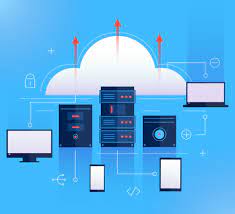With VPS hosting becoming more popular in the ecommerce and commercial sectors, it’s worth taking another look at how it might be made more safe. A VPS is often a wonderful great source including both security and pricing when rented from reputable providers, but most essential sections are still managed by in-house teams
Control of access
Regulating server configuration and administrative responsibilities is the first step in constructing a reliable hosting environment. When the administrators have access to the VPS server, they must create usernames and passwords for all of the accounts that will be used to administer it.
Some of the first things IT administrators should do in circumstances where numerous people have access to the server create secure passwords and define username standards.
Different users can be allocated the job of sudoers on Linux-based servers, but on Windows-based servers, this is accomplished by connecting users in Remote Desktop Groups.
To reduce the chances of illegal access, make sure you disable remote access for default admin accounts. Only accounts with proper access will be able to control important areas in this manner.
Installation of a Firewall
To restrict access to the device to particular areas or lines, you should install a firewall that monitors traffic and controls remote access. Although many users will not be able to restrict access to a specific IP address or remote access service, some may want to permit global access in order to manage it from many devices and places.
ConfigServer Security and Firewall, which provides a variety of security choices, is a valuable tool for controlling server security and firewall settings. The program includes, among other things, an SPI iptables firewall script, a daemon process that monitors login authentication failures, SSH and SU login alerts, and various other features designed to help with related procedures in complicated situations.
MySQL security
Another important step in preventing malicious attacks is to safeguard the MySQL system so that hackers cannot access server databases. Although the communication between the MySQL client and the server is safe, all data is transmitted as text, which may be read by anybody sniffing the network.
As a result, the following steps should be included in the MySQL system security process:
Password protection (minimum 10 characters, upper/lower case, numbers, syntax characters) are required for all MySQL accounts.
- MySQL server should never be operated as the Unix root user, as any user with file permissions might potentially create files as root.
- Effectively manage file rights, e.g., do not provide them to anybody other than admin users. Other privileges, such as process and super, are also affected.
- For added security, see the whole set of MySQL security procedures, which may be found here.
PHP and webserver settings
There are several strategies available to assist you in protecting the server against malicious activity, and the most essential thing here is to understand exactly what the primary dangers to your organization are. Among the most popular web servers, such as Apache or Nginx, all had their own capabilities that need to be set to adhere to the organization’s overall security procedures.
However, irrespective of the server you employ, you may wish to deactivate other techniques or indexing settings to ensure complete control over the data your server broadcasts.
The essential security features of PHP, on the other hand, should be configured after scanning for vulnerable PHP setups. Using a script like PHP Secure Configuration Checker or pc, which evaluates the status of php.ini and other relevant subjects, is one approach to do so.
Because the majority of assaults take place through insecure database setups and document upload systems, security experts should focus on regulating and making these systems hacker-proof initially. Exploring built-in modules, limiting information leakage, reporting PHP failures, and reducing loadable PHP modules are just a few of the tasks.
WHM/cPanel configurations
There are numerous options you need to add to your hosting environment’s control panel to ensure that your databases are handled securely. Because hosting panels are a tool that several users are able to gain access to, it’s critical to create secure passwords and clearly define user responsibilities once again.
Firewall, anti-virus, and anti-rootkit are among of the software tools that should be used in WHM/cPanel, while extra settings like spam protection and database backups may be handled using the panel’s options.
Additionally, you should check your FTP server setup to ensure that anonymous FTP access is disabled and that Secure Shell version 2 is used (SSH). You’ll be up to date on the most current changes, such as account creation, software installations, and other upgrades, thanks to continuous system monitoring, which allows you to respond quickly if any suspicious behavior is identified.



